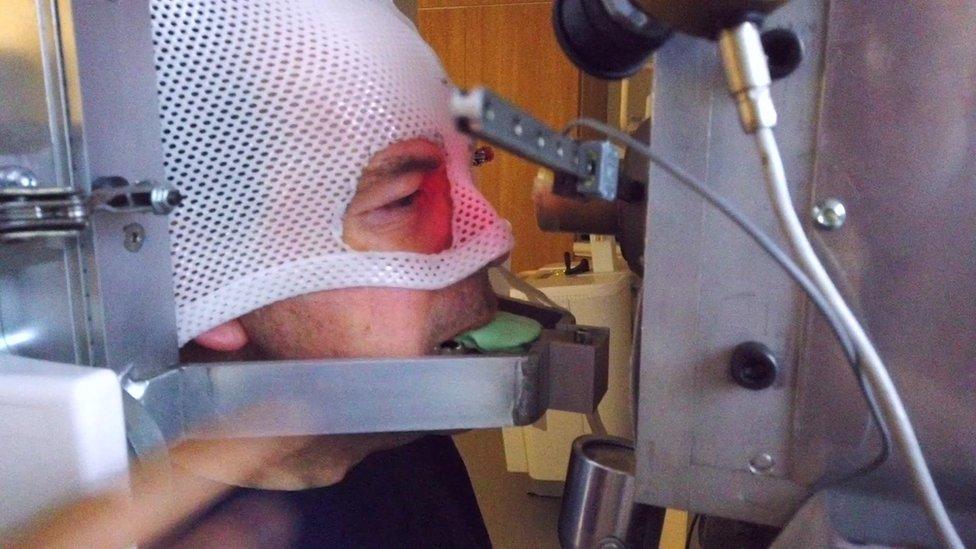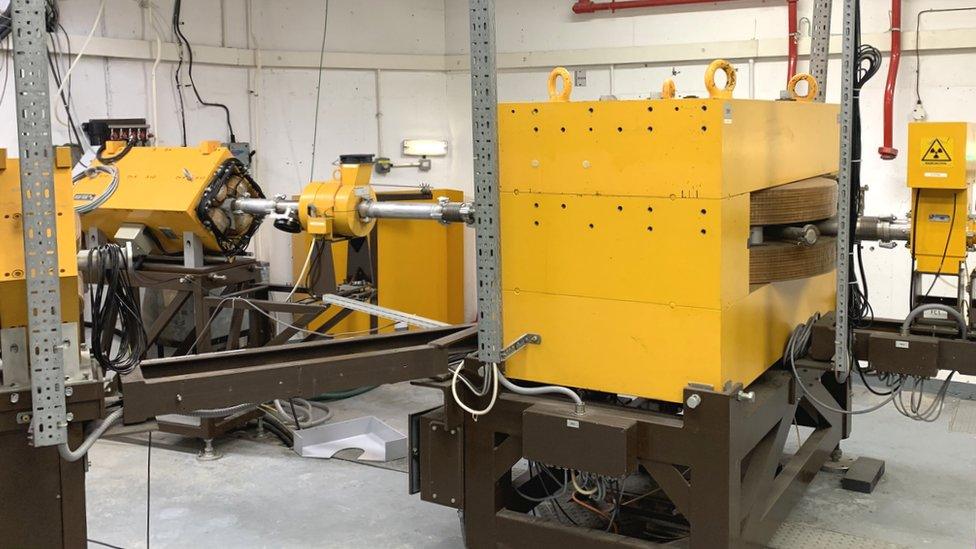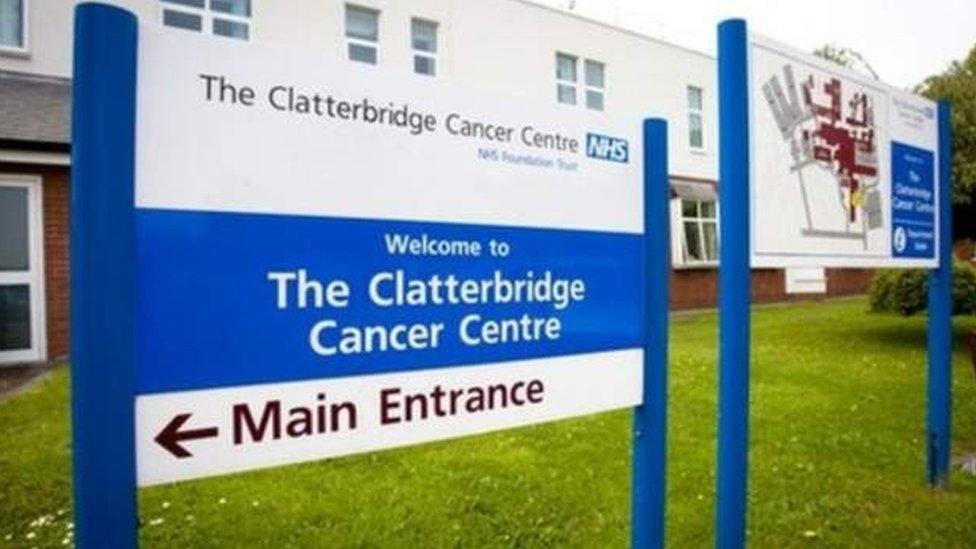Clatterbridge Cancer Centre 'may lose proton beam therapy'
- Published

BBC correspondent Rory Cellan-Jones was treated at the Clatterbridge Cancer Centre in July
A centre which has been the home of the only UK facility for treating rare eye cancers may lose the technology in the future, health bosses have warned.
The world's first low-energy proton beam therapy was performed at Wirral's Clatterbridge Cancer Centre in 1989.
About 250 people receive the treatment every year, but the technology is nearing the end of its lifespan.
The Royal College of Radiologists (RCR) said the NHS would replace it, but it may be put at another site.

Chief executive Dr Liz Bishop said parts were becoming "increasingly difficult to find"
The low-energy proton beam technology used at the centre works by sterilising tumour cells so they no longer grow.
Chief executive Dr Liz Bishop said the expertise and parts needed to maintain it was becoming "increasingly difficult to find".
She said there was "no standalone replacement for the machine available, [which] raises issues with the long-term sustainability of the service in its current form".
Dr Bishop said the centre was working "to develop an appropriate plan for the future to... ensure patient treatment isn't compromised".
WATCH: Rory's proton therapy diary
The BBC's Rory Cellan-Jones was treated at the centre in July.
He said it was "an amazing place" which involves "cutting-edge science, advanced medicine and extraordinary patient care".
"The team there are wonderfully sympathetic and caring; definitely my best experience as an NHS patient," he added.
The RCR's Dr Jeanette Dickson said she had "confidence" the NHS would continue to provide the treatment, but it could be at another site, depending on what was best for both the service and the patients.
She added that Clatterbridge would be "exploring all of those options".
- Published12 July 2019
- Published1 February 2017
